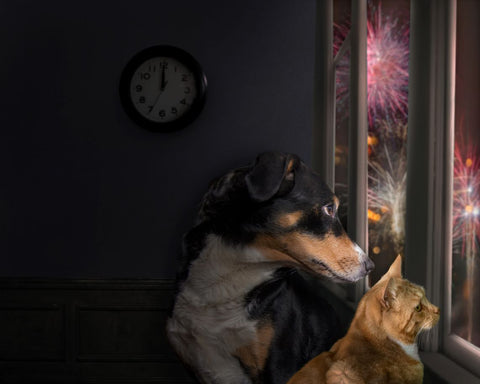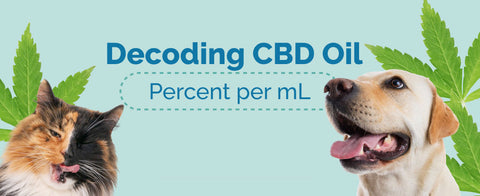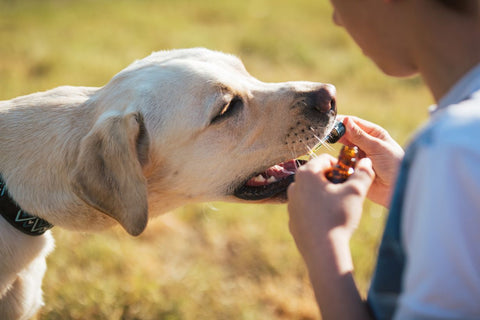

Just like humans, dogs can struggle with anxiety—and they’re not always great at telling us when something’s wrong. While some pups wear their emotions on their furry sleeves, others are more subtle. As a loving pet parent, it’s important to know what to watch for so you can step in with the right support. From restless pacing to changes in appetite, anxiety can manifest in ways you might not immediately associate with stress.
Let’s explore seven common signs of anxiety in dogs that are often overlooked—so you can help your best friend feel more at ease, tail wags and all.
1. Excessive Licking or Chewing
It’s not just about itchy skin—repetitive licking or chewing can be a sign of emotional discomfort. Dogs often self-soothe by licking their paws or other body parts, especially when they’re feeling anxious.
Keep an eye out for:
-
Raw or red patches of skin
-
Hair loss on the paws or limbs
-
A sudden uptick in grooming behavior
If the behavior becomes compulsive, it may indicate chronic anxiety rather than a temporary stressor.
2. Changes in Appetite
Anxious dogs may show shifts in eating habits—either losing interest in food or scarfing it down faster than usual. While appetite can vary for many reasons, stress often plays a role.
Watch for these red flags:
-
Skipping meals or eating less than usual
-
Sudden food aggression
-
Digestive issues like vomiting or diarrhea
If your pup’s appetite seems off for more than a day or two, anxiety could be the hidden culprit.
3. Panting and Pacing
Dogs pant to cool off, but if it’s not hot and your dog hasn’t been exercising, this could be a sign of stress. Pacing is another physical outlet for anxious energy and can indicate your dog is feeling unsettled.
Common situations where this might happen:
-
Before thunderstorms or fireworks
-
When left alone (separation anxiety)
-
During changes in routine
Look for repetitive movement patterns—your pup might be trying to "walk off" the worry.
articleproducts1
4. Destructive Behavior
Chewed furniture, shredded pillows, or scratch marks on doors may not just be mischief—it could be anxiety talking. When left alone, anxious dogs may act out as a way to cope with their stress.
This behavior may include:
-
Digging at doors or windows
-
Chewing furniture, shoes, or household items
-
Escaping crates or fenced areas
While it’s easy to get frustrated, remember: your dog isn’t trying to be “bad”—they’re just overwhelmed.
5. Avoidance or Withdrawal
Every pup loves a cuddle now and then—but if your social butterfly suddenly prefers solitude, anxiety might be behind the shift. Avoidance can be your dog’s way of saying they’re not feeling safe or secure.
You may notice:
-
Hiding under beds or in closets
-
Turning away when approached
-
Avoiding eye contact
Sometimes, dogs need space, but consistent withdrawal is worth a closer look.
6. Barking or Whining More Than Usual
Vocalizations are a dog’s way of communicating, and excessive barking or whining can be a call for help. If your pup is noisier than normal, it could be their way of expressing stress.
Listen for:
-
Whining when left alone
-
Barking at seemingly nothing
-
Howling or yelping unexpectedly
Consider when and where these vocalizations happen—it might reveal the root cause of the anxiety.
7. Trembling or Shaking
Not all shivers are from the cold. Shaking, especially during stressful events like vet visits or car rides, can be a clear sign of nervousness. While occasional trembling can be harmless, frequent or intense shaking may signal deeper anxiety.
Shaking may also occur with:
-
Loud noises
-
New environments
-
Meeting new people or animals
A trembling pup may benefit from calming support or reassurance from their favorite human (that’s you!).
Helping Your Anxious Dog Feel Calm Again
If any of these signs sound familiar, your dog may be dealing with anxiety—and they don’t have to suffer in silence. At Prana Pets, we offer natural, vet-approved supplements designed to help soothe your pet’s nerves without sedation.
Top calming options include:
-
CBD Oil for Dogs – Promotes relaxation and emotional balance
-
Nervous System Support – Herbal formula to ease stress and improve mood
-
Complete Calming Pack – A powerful combo for daily anxiety support
Your dog deserves to feel safe, loved, and stress-free—and with the right tools, you can help them live their happiest, most tail-wagging life.
Need help choosing the right calming support for your pup? Reach out to our team of holistic pet experts—we’re always here to lend a paw.
articlebanners1




